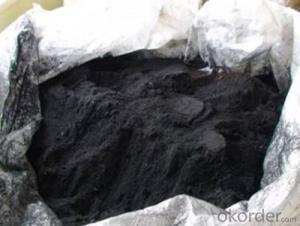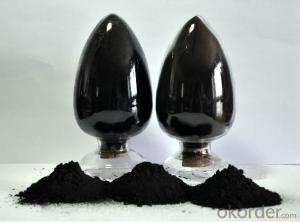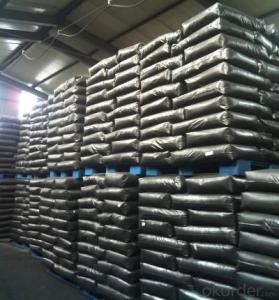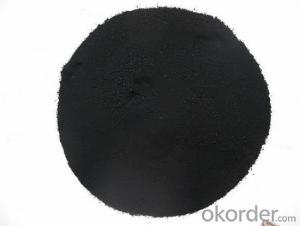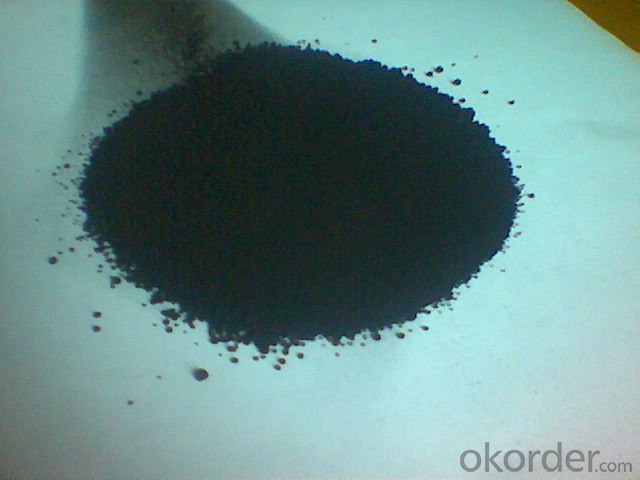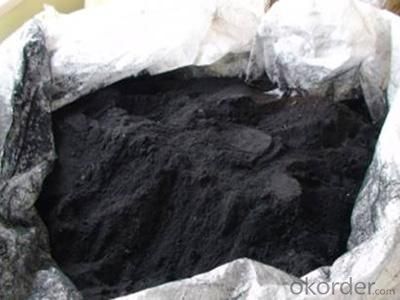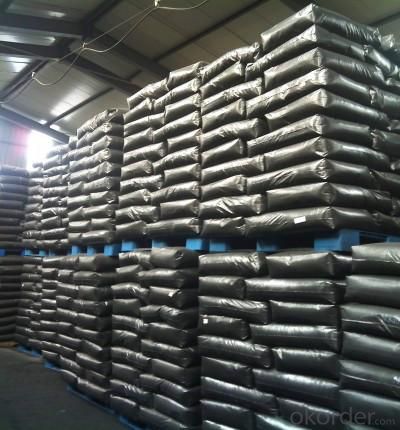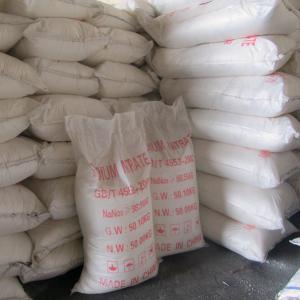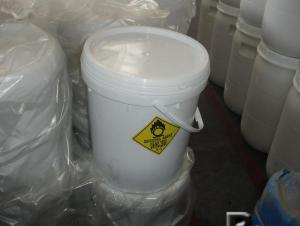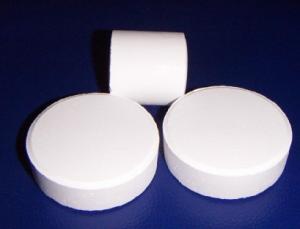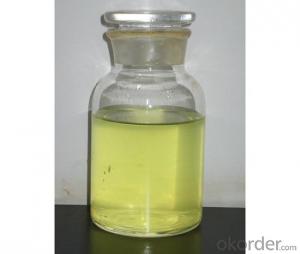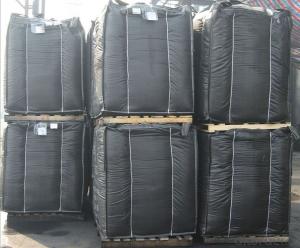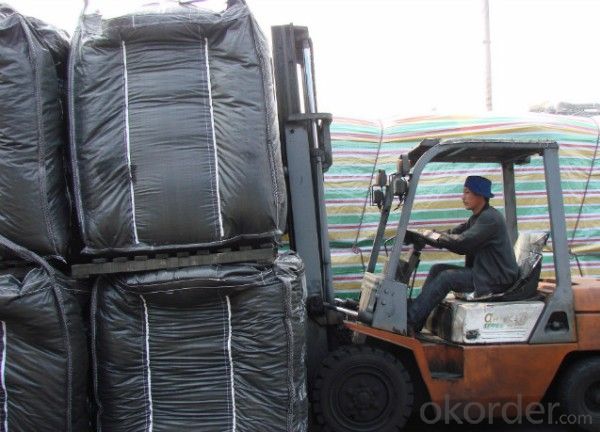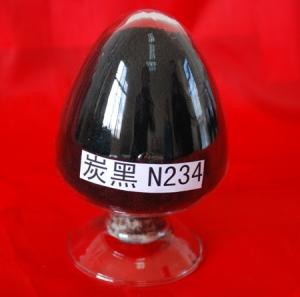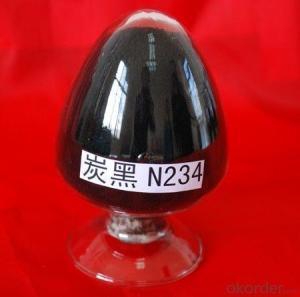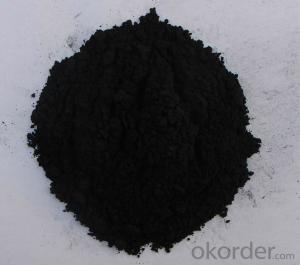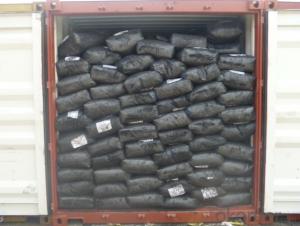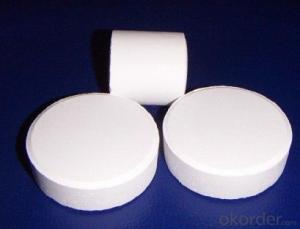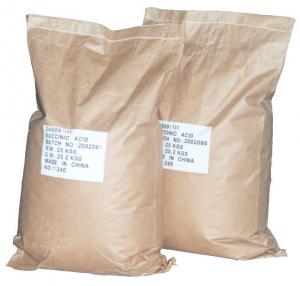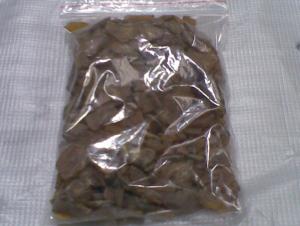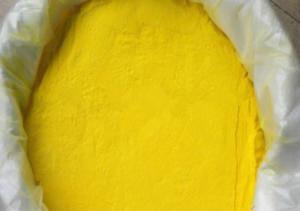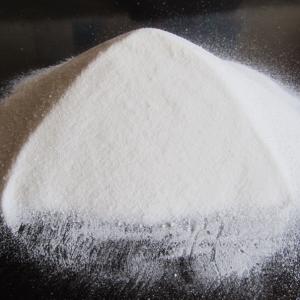Carbon Black N234(ISAF-HS) for granular
- Loading Port:
- Qingdao
- Payment Terms:
- TT OR LC
- Min Order Qty:
- -
- Supply Capability:
- 20000 m.t./month
OKorder Service Pledge
OKorder Financial Service
You Might Also Like
Specifications
high strcture;comparatively nice rubber-reinforcing and abrasion-resistant ability in the series of N200
Technical Data Sheet:
No. | Item | Product Name: N234 | Performance |
1. | Iodine Absorption(g/kg) | 120±7 | It is also known as medium super abrasion furnace black. It is frequently used furnace with higher structure, whose abrasion resistance is between super abrasion furnace black and high abrasion furnace black. The product is used in truck tire and other rubber products, where high strength and high abrasion resistance are required. |
2. | DBP absorption (10-5m³/kg) | 125±7 | |
3. | Compressed DBP absorption (10-5m³/kg) | 96~108 | |
4. | CTAB surface area (10³m²/kg) | 109~125 | |
5. | STSA (10³m²/kg) | 105~119 | |
6. | Nitrogen surface area (10³m²/kg) | 112~126 | |
7. | Tint strength % | 115~131 | |
8. | Pour density (kg/m³) | 320±40 | |
9. | Heating loss % ≤ | 2.5 | |
10. | Ash content % ≤ | 0.7 | |
11. | 45μm residue on sieve % ≤ | 0.100 | |
12. | Impurity | no | |
13. | 300% stress at definite elongation MPa ≥ | 0.0±1.5 |
Packing Dimension:
Packing | Unit Dimension (cm) | Folded Packing Dimension (cm) |
20kg/bag | 65*45*15 | 105*105*230 |
500kg/bag | 105*105*130 | 105*105*230 |
1000kg/bag | 105*105*230 | 105*105*230 |
Storage & Transportation:
Storage:Keep in dry and well-ventilated place, protect from moisture and sharp objects, separate from oxide.
Transportation: With pallet, coating, protect from rain, sun and sharp objects, separate from other articles.
- Q: Is the catalyst used in the starch phosphate reaction
- (Cat1, cat2, cat4 and cat5) in the presence of terephthalic acid,
- Q: In the chemical reaction, why can the catalyst speed up the reaction rate
- Platinum and rhodium catalyzes the conversion of carbon monoxide and nitrogen oxides to carbon dioxide and nitrogen, which are used in the conversion of automobile exhaust gases, and in most cars.
- Q: How does catalyst aid a chemical reaction?
- A catalyst will lower the activation energy of a reaction, and hence allow it to happen faster. The actual mechanisms vary widely. Two mechanisms are: 1/ formation of intermediate compounds, which can then decompose into the catalyst and the required product 2/ provision of a large surface area for adsorption, so the reactant molecules can come into contact sooner.
- Q: Is the catalyst in the chemical reaction better?
- If the concentration of the liquid is too low, then the catalyst is also ineffective
- Q: Comparison of biocatalysts with chemical catalysts!
- biocatalyst activity is adjustable, can be subject to hormones and other active regulation of hormones.
- Q: In chemistry what is a catalyst and an example?
- A catalyst is a liquid or a gas you can add to a substance to make it react quicker and/or upon itself or another chemical. A catalyst can be one chemical you add to another that causes a significant reaction or they could be variables in an experiment (like temperature) can be a catalyst. It could also be a liquid/gas that you add to a substance to neutralize it or make it safe to clean/touch/handle. For instance if you spill chemicals in a biology lab, you have to add a catalyst (generally water or clarifying soap) to make it safe to clean up. Hope I could help.
- Q: The last question asked no one answered this question.
- First of all now the most common way to change the ligand.
- Q: Does anybody have any tips or references I can go to for this? I'm writing a novel and the main character wants to be a catalyst; the story isn't about him and his journey, so much as the effects on everyone around him that come about simply because of him being there and being who he is. How would I go about doing this, and doing it well?
- Ways to be a catalyst: By his behaviour: - He is a good listener. People use him as a sounding board and make important decisions as a result. - He is indiscreet and inadvertently reveals people's secrets and back-sniping comments. - He is a ****-stirring gossip. - He is a home-wrecking Lothario. - He is wise and gives good advice. - He is a hooligan who ruins businesses with vandalism, costs people their jobs and ruins relationships by beating people up. - He is a manipulative, blackmailing bastard who tries to turn every woman into a prostitute and con every man out of his money. - He is a charlatan who preaches nonsense about religion, health and business investments. By effortlessly influencing other people's behaviour: - He is famous and people try to impress him wherever he goes. - He has cancer or a disabling war wound. People admire and pity him and are shocked by his PTs mood wings. - He is gay, Muslim or a suspected paedophile and people want to persecute or cure him. - He is destitute. People argue amongst themselves over whether it's because he's lazy, has bad karma or there but for the grace of God go I. - He really looks like Jesus, Buddha or Santa and the sight of him makes people contemplate their Humanist values, coming to various conclusions. Perhaps you can write about his reputation; how he earned it, how it precedes him and provokes prejudices that he sometimes confirms or disproves. Use a detached, omniscient God-narrator. (Pretend Morgan Freeman's reading the audiobook.) Alternatively perhaps he is not a catalyst but a neurotic voyeur, fascinated by the minutiae of other people's lives so that the mundane appears tumultuous. He is not influencing people but your account of the changes in people's lives are centred on his observation of them.
- Q: What is the catalyst for industrial aluminum electrolysis?
- 2AlCl3 (melt) = power = 3cl2 + 2al by-product is chlorine
- Q: Does increasing the amount of catalyst added to, say, a solution of Hydrogen Peroxide, make the rate of reaction go faster. Is the rate of reaction directly proportional to the amount of catalyst added to the solution? Or does the experiment go at the same rate regardless of how much catalyst there is? Thanks would really appreciate some answers. - Sarah
- Catalyst do not participate in the reaction but it speeds up the reaction. If you increase the amount of catalyst from the required amount, it would somehow negates its positive response or it would result in producing another product.
Send your message to us
Carbon Black N234(ISAF-HS) for granular
- Loading Port:
- Qingdao
- Payment Terms:
- TT OR LC
- Min Order Qty:
- -
- Supply Capability:
- 20000 m.t./month
OKorder Service Pledge
OKorder Financial Service
Similar products
Hot products
Hot Searches
Related keywords

